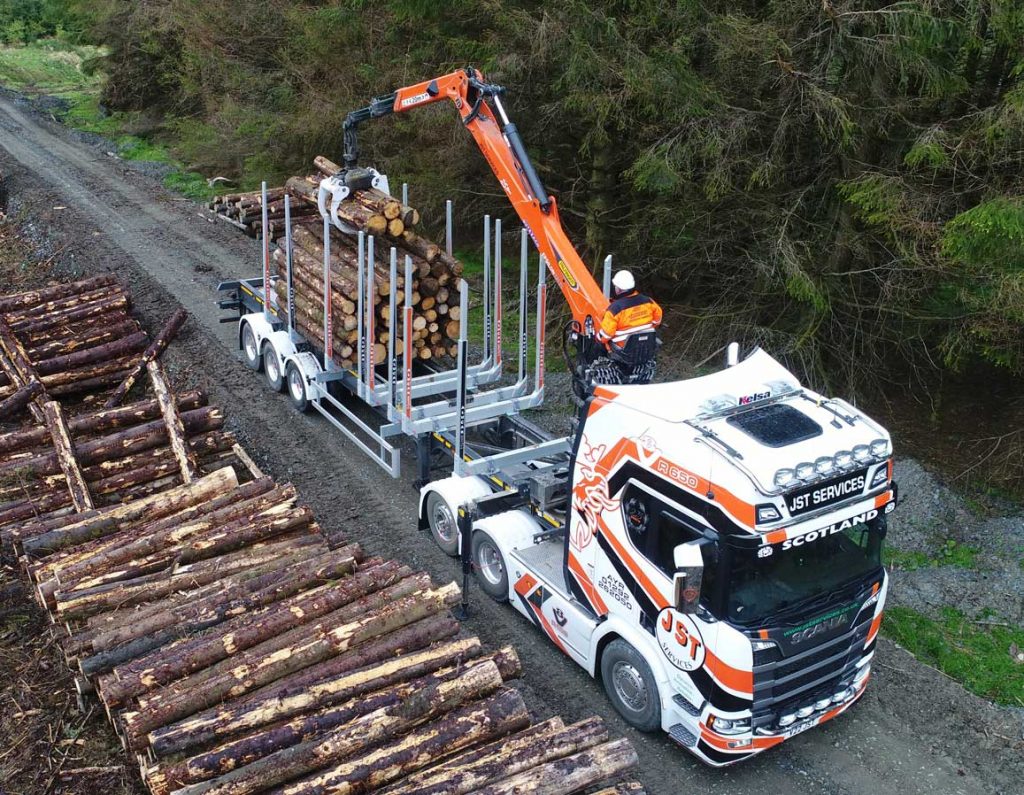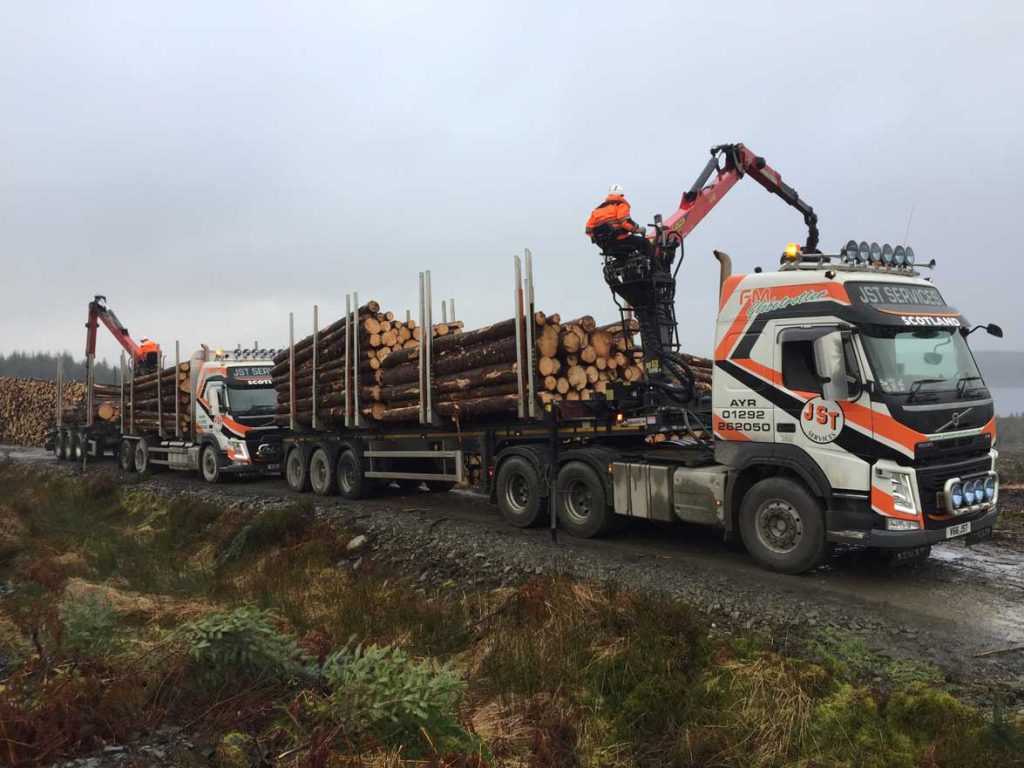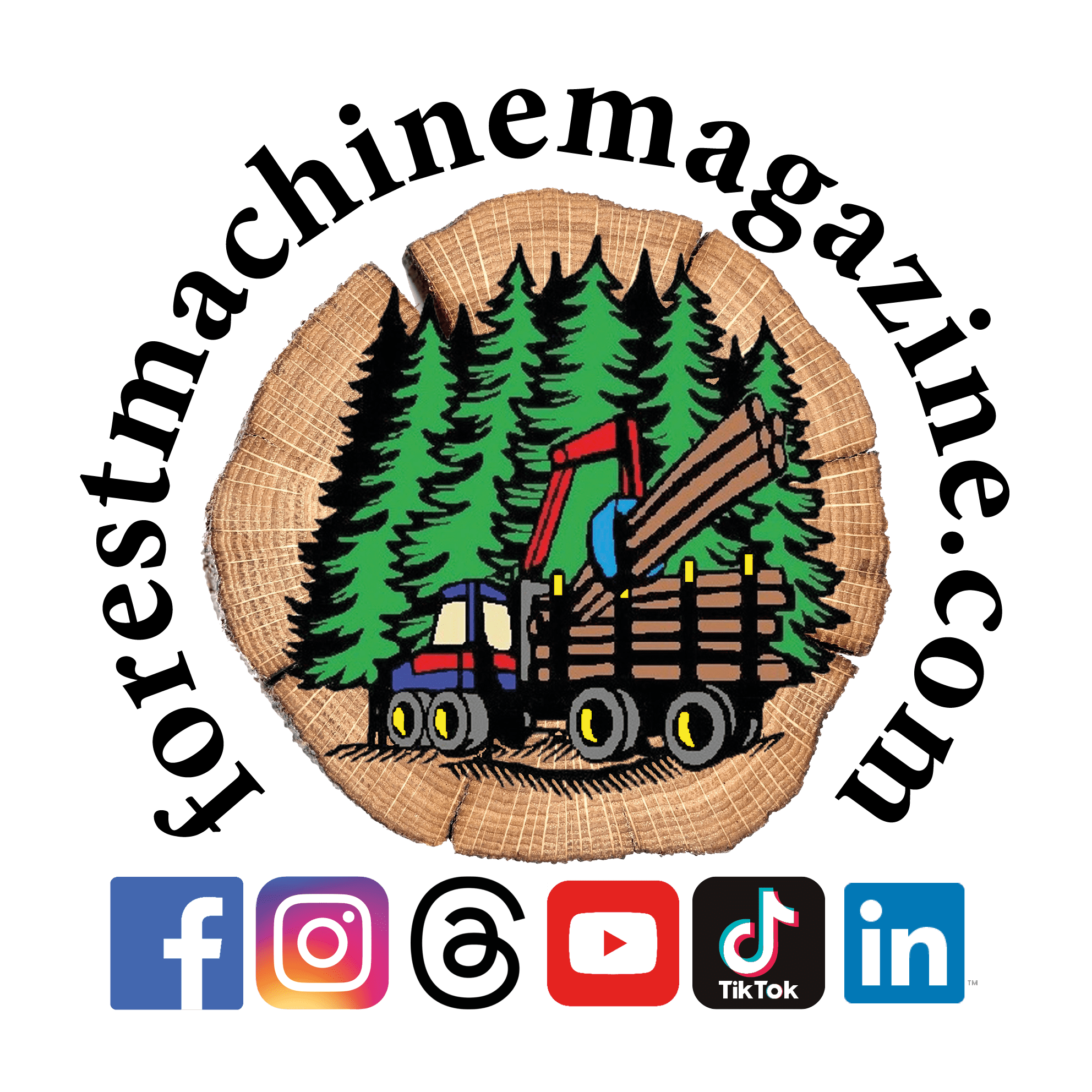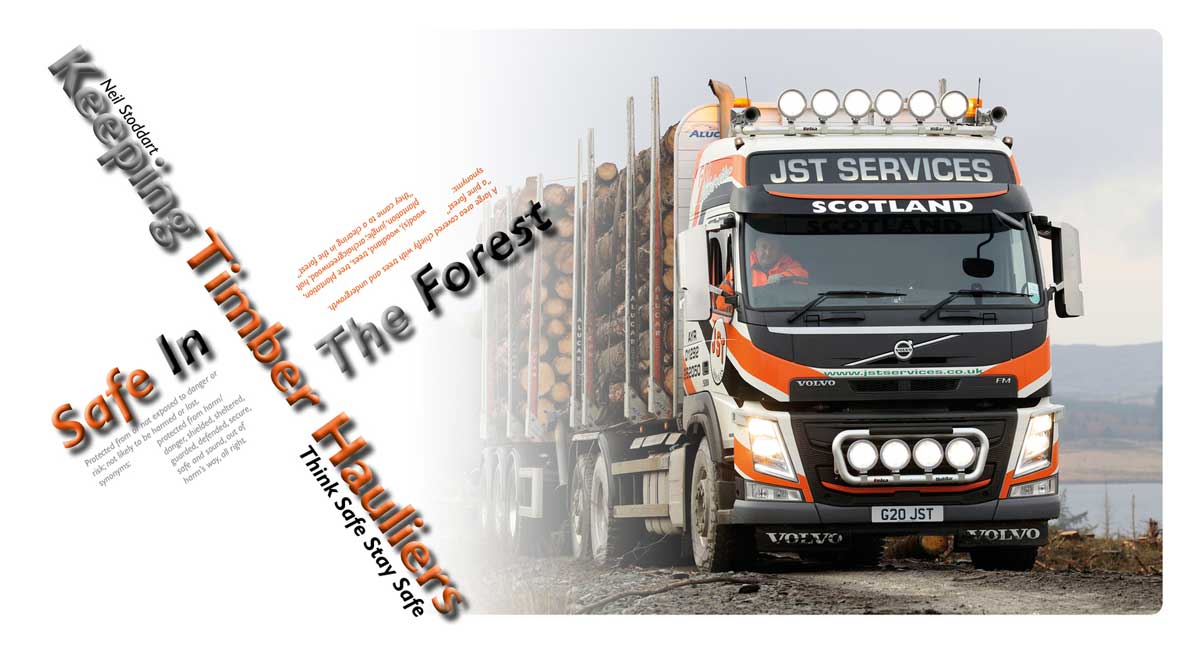The stereotypical logging truck driver is a super tough guy, he can of course handle the big rig, the rough roads, long hours, work in all weathers and still jump out the cab wearing only a faded V8 tee shirt and put co- workers (and managers) into their place with an instant sharp witted tongue.
Whilst this vision sometimes isn’t that far from the truth, todays drivers are a much-changed breed. Firstly there are both guy and gals out there in the forest, and these days they are all thoroughly professional and qualified drivers, but secondly, and alarmingly….. the species is now in decline.
The average age of many experienced teams is often into the fifties with tales of recent ailments more likely than those of bold endeavour ……… so to encourage young blood in, and also look after the hauliers we have, we need make the sector a safe and positive place to work. Here’s a few simple pointers keep your drivers / haulage contractors safe and well.
Risk Assessments
At JST, risk assessments start with ‘Operational Management’. Establishing who is in charge of the works is paramount, both on site and at management levels. Clear definition of roles at the start is key. It’s a cliché, but always remember the 6 Ps:
Proper Pre Planning avoids Piss Poor Performance
Risk Assessments should be simple, functional, have understanding and buy in. The hirer of the service or plant should ensure that even in a modest form, there has been an exchange information in both directions and that this gets to the driver. If there is something out of the ordinary, have an onsite discussion. Record it. Between all parties, there should be the necessary knowledge, skills, training and experience to devise a safe solution. These type of chats are now called Tool Box talks by the way.


Site Safety
As a haulier, we can play our part on sites but remember drivers are entering the forest and worksite that is managed by others. Don’t go into a forest without a clear site map that shows the hazards. This should have been completed by the Forest Works Manager and should get to the driver. Roles and responsibilities – Drivers should know who the Site Safety Coordinator is, and by the way, Jimmy in the forwarder should clearly know in advance that he has actually been nominated for this role.
Surely we all know by now that we need good site hazard signage and goal posts etc as absolute basics. Adequate site welfare of course remains a grey area – who is going to pay for that then?, Forgetting the forest end for now, if facilities aren’t good at the mill or dockyard, someone is contravening Workplace (Health, Safety and Welfare) Regulations 1992, ACOP L24, Regulations 20 & 21.
All vehicles in the forest inc site supervisors should be carrying spill kits, fire extinguishers and provision for delivery of 1st aid. Do you know where you are ? is there a phone signal, if not where is it ? has this been marked on site ? Basic Emergency planning can be undertaken simply with FISA 802 guide completed for every site. Lone working – most trucks are sat tracked these days and this technology has pushed this area forward greatly.
I could write a book on forest roads that aren’t fit for purpose (and this will be covered in a subsequent FTN article). Weather plays a part, but continuing with haulage operations when we should really stop due to poor road condition is the single biggest site issue that logging drivers face, causing risk to life & limb both short term (incidents) and long term (wear and tear to tyres/brakes etc).
Let’s not beat about the bush here, I suspect many Forest Works Managers don’t realise that failure to include health and safety as a key business risk in roading decisions can have catastrophic results. Many high-profile safety cases (don’t be mistaken – we’re talking fines and jail here) over the years have been rooted in failures of manager leadership. Make the right decision and do the right thing with road maintenance!
Training
Skills development is often overlooked. Remember that the only thing worse than training your employees and watching them leave, is not training them and having them stay. It doesn’t need to be onerous. We try and make driver CPC relevant, plan First Aid courses to be exciting, and undertake simple tool box talks. The world of ‘online resource’ for training is great. Most drivers have tablets laptops in the cab – why not sign off a course in the evening rather than watching errr Facebook? The new FISA Haulage safety guide is excellent – get them into drivers hands.
PPE
A borrowed viz vest covered in oil and grease isn’t going to cut it these days. Good clean PPE is the vanguard for your own professionalism, your business/ and how you treat staff. Keep it functional and simple. Go for quality kit. Check helmet dates, replace worn out stuff. If you think that it’s a menace to have to wear Viz/Boots/Helmet, wake up folks… because within 5 years you can add gloves and glasses to that list as a minimum requirement especially in mills and timber yards.
Occupational Health
This is a big subject. Did you know that one man in 5 dies before he’s old enough to retire, 2 in 5 before the age of 75. Makes you think eh. But we’re a tough breed up in the woods aren’t we? …..…….hmmm except we all know someone who’s suffering from this or that or worse. We wouldn’t run expensive machinery without regular checks and proper servicing so as to increase the longevity and value of that asset. So please keep your engine tuned and serviced as follows:
- Eat sensibly (a top tip is that you should have 5 different colours on your dinner plate)
- Cut down on your Pork Life mate, get some exercise – every day
- Don’t listen to Oasis – go easy on the cigarettes and alcohol
- Don’t overstrain your back
- Practice Safe sex
- Keep your mental health in check – watch those hours. Remember its only Soldiers who get medals
As a footnote – I know it’s not always easy to eat healthily on the road, the ticking clock of the tachograph means that whilst the driver would probably prefer to get 10 mins further up the road to the nice new craft deli in the next village for a salad and a flat white, the driving time left dictates it’s going to be the chippy again. No one is going to risk 6 points and a fine for some lettuce no matter how nice the dressing. What an industry. Quite literally Food for thought.
I would 110% recommend everyone gets a copy of the Haynes The Man Manual (as per your old Mk2 Escort manual) from the Mens Health Forum. Female versions also available. More relevant perhaps is the BC based The Manual a Mens Health survival guide available at men.northernhealth.ca We perhaps all need to drop the tough man act, read this type of information and follow it, it might buy a few more years.
Stay safe out there Neil Stoddart


Forest Machine Magazine is written and edited by a forest professional with over 40 years hands on experience. We are dedicated to keeping you informed with all the latest news, views and reviews from our industry.
To support us you can subscribe to our bi-monthly magazine which is delivered to your door from only £30 per year.
Subscribe here


If some one wants expert view on the topic of blogging and site-building after that i advise him/her to visit this website, Keep up the fastidious job.
Thank you Amira, much appreciated
Your welcome